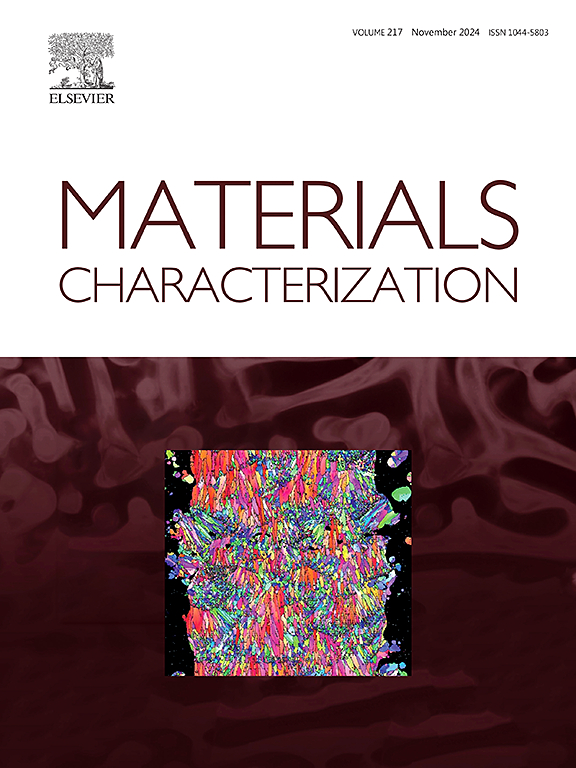Research on the seawater corrosion resistance mechanism of 7075 aluminum alloy based on combination strengthened gradient surface construction
IF 4.8
2区 材料科学
Q1 MATERIALS SCIENCE, CHARACTERIZATION & TESTING
引用次数: 0
Abstract
This study investigates the seawater corrosion resistance mechanism of 7075 aluminum alloy by constructing a composite reinforced gradient surface. The research focuses on the impact of ultrasonic impact-solid shot peening and water jet (UIT-SPEWJ) combined surface modification on the seawater corrosion behavior of 7075-T6 aluminum alloy in natural seawater environments. Surface morphology, microstructural characterization, and electrochemical corrosion tests were analyzed to understand these effects. The findings reveal that in the seawater corrosion environment, the surface of the 7075-T6 aluminum alloy was covered with blocky corrosion products. The UIT-SPEWJ combined surface modification led to grain refinement, increased grain numbers, and a notable reduction in electrochemical corrosion current density. A positive shift in corrosion potential and a larger capacitive arc radius were also observed. Among the modified samples, the UIT-SPEWJ method resulted in the lowest corrosion current density at 2.697E-6 A/cm2 and the most positive corrosion potential at −0.701 V. This combined surface modification approach significantly enhanced the seawater corrosion resistance of the 7075-T6 aluminum alloy.
求助全文
约1分钟内获得全文
求助全文
来源期刊

Materials Characterization
工程技术-材料科学:表征与测试
CiteScore
7.60
自引率
8.50%
发文量
746
审稿时长
36 days
期刊介绍:
Materials Characterization features original articles and state-of-the-art reviews on theoretical and practical aspects of the structure and behaviour of materials.
The Journal focuses on all characterization techniques, including all forms of microscopy (light, electron, acoustic, etc.,) and analysis (especially microanalysis and surface analytical techniques). Developments in both this wide range of techniques and their application to the quantification of the microstructure of materials are essential facets of the Journal.
The Journal provides the Materials Scientist/Engineer with up-to-date information on many types of materials with an underlying theme of explaining the behavior of materials using novel approaches. Materials covered by the journal include:
Metals & Alloys
Ceramics
Nanomaterials
Biomedical materials
Optical materials
Composites
Natural Materials.
 求助内容:
求助内容: 应助结果提醒方式:
应助结果提醒方式:


